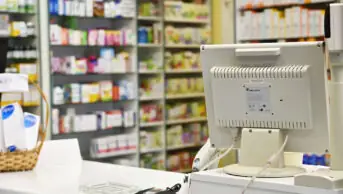In this time of growing antimicrobial resistance, we do not have unlimited ways to effectively treat a systemic infection. We must be antimicrobial stewards and use antimicrobials responsibly to preserve their effectiveness[1]
. This applies to antifungals too — not just antibiotics[2]
.
For good reason, antifungal stewardship is being considered by the World Health Organization, because the appropriate use of antifungals poses unique challenges to clinicians[3]
. Patients presenting with fungal infections, particularly systemic or invasive fungal infections, have greater comorbidities and higher risk of mortality, and the treatments are associated with higher costs and greater risk of toxicity. These toxicities are frequently as a result of drug interactions[2]
.
Stewardship efforts can be hindered where patients are taking many drugs; multiple interactions with antifungal agents can lead to excess toxicity or failure of the therapy. More than 500 serious interactions occur with antifungals. These agents are metabolised by and inhibit predominantly cytochrome P enzymes in the liver, by which many other drugs are also metabolised — the potential for harm cannot be ignored. There are also new and emerging pathways, such as the OATP1B1 and BCRP, whose significance is not yet fully understood.
Clinicians should make sure they have the knowledge of these interactions at their fingertips so they may appropriately manage fungal infections while using antifungals responsibly; they may find useful the Antifungal Interactions Database, to which I am a consultant. The database is a single, central resource that holds interactions data for this class of drugs.
The database was first launched in 2012 by the National Aspergillosis Centre (NAC). At launch, real-time updates were not possible, and there were considerable delays in uploading information whenever new drugs were launched. In 2019, the database was revamped with easy update capability, allowing for timely addition of new drugs and their interactions with antifungals.
There is also an app version on Android devices, which allows easy use when computer access may be restricted. In the past year, since the launch of the new version, 192 new drugs have been added, giving a vast array of easily accessible information, without having to delve to find individual snippets of information and interpret data yourself.
The database can be found at https://antifungalinteractions.org/ or the NAC’s website.
Saarah Niazi-Ali, pharmacist and consultant, Antifungal Drug Interaction Database for the Fungal Infection Trust, in association with the National Aspergillosis Centre, Manchester
References
[1] Gohlar G & Hughes S. Pharm J 2019;303:7297. doi: 10.1211/PJ.2019.20206772
[2] World Health Organization. 2019. Available at: https://apps.who.int/iris/bitstream/handle/10665/329404/9789241515481-eng.pdf (accessed July 2020)
[3] World Health Organization. 2020. Available at: https://www.who.int/publications/i/item/9789240006355 (accessed July 2020)


